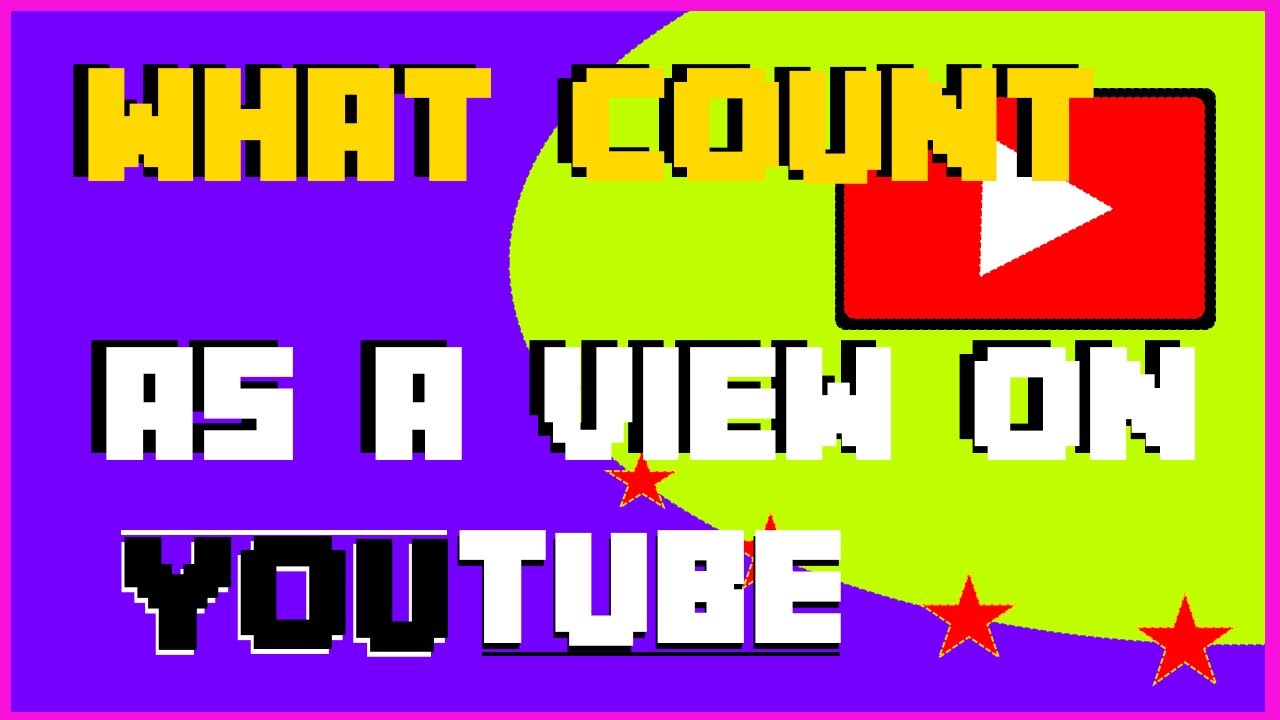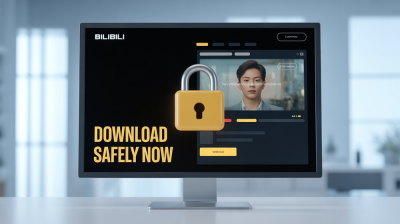Introduction to YouTube View Counts

Welcome to the world of YouTube! If you’ve ever uploaded a video, you might have wondered how views are counted. It’s a fascinating process that not only influences your video’s success but also shapes the entire platform. In this post, we’ll explore what counts as a view and how those numbers can affect your channel. So, grab your snacks, and let’s dive into the mechanics behind YouTube view counts!
Also Read This: How Do I Watch SEC Network Plus on YouTube TV? A Guide to Accessing College Sports on YouTube TV
What Counts as a View on YouTube?

When it comes to YouTube, not all views are created equal. Understanding what counts as a view can help you strategize better for your content. Here’s what you need to know:
1. Basic Definition of a View:
A view on YouTube is counted when a user watches a video for at least 30 seconds. This timeframe helps ensure that the view is genuine and not just someone clicking play and then quickly navigating away.
2. Conditions for Counting a View:
- The video must be played from start to finish for at least 30 seconds.
- The viewer must actively engage; automated views from bots or refreshes don’t count.
- Short videos under 30 seconds have different metrics; typically, they count as a view if watched completely.
3. Factors Influencing View Counts:
- Engagement: Likes, comments, and shares can influence how often your video is recommended, indirectly affecting view counts.
- Replays: If someone watches your video multiple times, those views can count, but excessively rewatching in a short period may not.
- Geographic Location: YouTube may filter out views that appear suspicious based on location to maintain accuracy.
4. The Importance of Unique Views:
YouTube uses sophisticated algorithms to determine unique views. For instance, if the same user watches your video multiple times, it may not count every time. This is to prevent inflated view counts and ensure that the numbers reflect genuine interest.
5. The Role of YouTube Analytics:
Using YouTube Analytics, creators can delve deeper into their view counts. You’ll find data on:
- Where your views are coming from (search, suggested videos, etc.)
- Viewer demographics
- Watch time and retention rates
Understanding these metrics can help you tailor your content strategy and attract more viewers.
In summary, YouTube view counts are more than just numbers—they’re a reflection of engagement and interest in your content. Knowing what counts as a view can help you focus your efforts on creating quality videos that resonate with your audience. Happy creating!
Also Read This: How to Log Out of YouTube Music App on All Devices
3. How YouTube Analytics Tracks Your Views

YouTube Analytics is a powerful tool that helps creators understand their audience better. So, how exactly does it track your views? Let’s break it down!
When someone clicks on your video, YouTube begins tracking that view almost immediately. Here are the key factors involved in this process:
- Unique Viewers: YouTube distinguishes between unique viewers and total views. Unique viewers are counted based on the number of individual accounts that watch your video. This helps you understand how many different people are engaging with your content.
- Watch Time: YouTube doesn’t just count every click as a view. The person must watch your video for at least 30 seconds for it to be counted. This helps ensure that the views are meaningful; after all, you want people to actually engage with your content!
- Session Time: YouTube also considers the entire session time, which includes how long a viewer stays on the platform after watching your video. If they continue to watch more videos, it signals to YouTube that your content is engaging.
- Geolocation: Views from different locations can also be tracked. YouTube uses this data not only to understand where your audience is coming from but also to tailor content suggestions.
Moreover, you can check these metrics directly on the YouTube Studio dashboard. Under the Analytics section, you’ll find a breakdown of views, watch time, and demographics, giving you valuable insights into who’s watching your videos.
Keep in mind that YouTube’s algorithm is constantly evolving. While the basics of how views are counted remain consistent, changes in policy or technology can impact the metrics you see. Staying updated with YouTube's Creator Academy or their official blogs can equip you with the latest information and best practices.
Also Read This: How to Create Chapters for Your YouTube Video in 2023
4. The Impact of Your Own Views on Channel Metrics

Have you ever wondered if watching your own videos affects your channel metrics? Spoiler alert: it does! However, the impact is nuanced and depends on several factors.
Let’s explore how your own views play into the bigger picture:
- Total Views: Watching your own videos contributes to the overall view count. However, if you’re regularly refreshing the page or replaying the video multiple times, YouTube may not count every view. The platform is designed to filter out spammy behavior to keep metrics authentic.
- Engagement Metrics: Your engagement, such as likes, comments, and shares, plays a critical role. If you’re genuinely engaging with your content (e.g., liking or commenting), it can positively affect how YouTube promotes your video through recommendations.
- Analytics Distortion: Excessive viewing of your own videos can skew your data, particularly if you’re trying to track authentic engagement. It's better to rely on YouTube's analytics for a clear picture rather than your own viewing habits.
- Trust Your Audience: Ultimately, it's your audience’s views that matter most. Focus on creating content that resonates with them instead of obsessively watching your own videos.
In conclusion, while your own views can contribute to the total metrics, it’s essential to remember that YouTube aims to prioritize genuine engagement. The best strategy is to foster an authentic connection with your audience, encouraging them to watch, share, and interact with your content. After all, building a loyal community is what truly matters!
Also Read This: Transcribing YouTube Videos into Text: Tools and Tips for Accurate Results
5. Common Misconceptions About View Counts
When it comes to YouTube views, there are plenty of myths swirling around that can confuse even the most seasoned creators. Let’s clear the air by addressing some of the most common misconceptions!
- Myth #1: All Views Are Counted the Same - You might think that every view counts equally, but that's not entirely true. YouTube has specific criteria for what constitutes a valid view. For instance, a view must come from a real user, not a bot, and the viewer must watch the video for a certain duration before it registers.
- Myth #2: Refreshing the Page Increases Views - Many users believe that refreshing a video page will boost the view count. While you might see the view increase momentarily, YouTube's algorithms are smart enough to detect this behavior and only count legitimate views.
- Myth #3: Longer Videos Automatically Get More Views - It's a common assumption that if a video is longer, it will attract more viewers. However, engagement is key! A well-paced, engaging video will perform better than a lengthy one filled with filler content.
- Myth #4: Views from Embedded Videos Count - If you embed your video on a website or blog, every view on that page does count, but only if the viewer interacts with the video directly on the site. Simply loading the page doesn't count as a view!
- Myth #5: Subscribers Always Watch Your Videos - Just because someone subscribes to your channel doesn’t mean they’ll watch every video you upload. Engagement rates can vary, so it’s essential to produce content that resonates with your audience.
Understanding these misconceptions is crucial for anyone looking to grow their channel. Being informed will help you set realistic expectations and focus on creating high-quality content that genuinely engages your audience.
6. How to Optimize Your Viewing Experience on YouTube
Now that we've debunked some myths about view counts, let's dive into how you can optimize your viewing experience on YouTube! Whether you’re a casual viewer or a budding creator, these tips will enhance your time spent on the platform.
- 1. Use Playlists Wisely: Creating or following playlists can streamline your viewing experience. You can easily binge-watch related content without having to search for each video individually.
- 2. Turn on Subtitles: If you're watching videos in a language you're not fluent in, enabling subtitles can help you better understand the content. Plus, it can enhance your learning experience!
- 3. Explore YouTube Premium: If ads interrupt your flow, consider subscribing to YouTube Premium. This service allows you to watch videos ad-free, and you can also download videos for offline viewing.
- 4. Adjust Video Quality: Depending on your internet speed, adjusting the video quality can enhance your experience. Lowering the quality may help if you're on a slower connection, while higher quality will provide a better viewing experience when bandwidth allows.
- 5. Engage with the Community: Don't just watch—interact! Commenting on videos, liking, and sharing helps creators know what you enjoy and can foster a sense of community around the content you love.
By incorporating these strategies, you’ll not only improve your own viewing experience but also contribute to the vibrant community that makes YouTube such a dynamic platform. Enjoy your next binge-watching session!
 admin
admin








